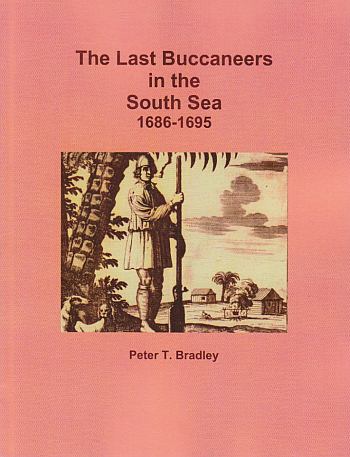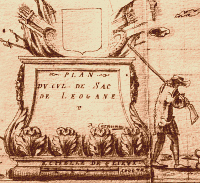

In 1686, a small group of mainly French buccaneers left the Caribbean for the South Sea. Instead of crossing the Isthmus of Panama, they loaded supplies on the east coast of North America, crossed the Atlantic Ocean to West Africa, and then headed for the Straits of Magellan. Until 1695, their exploits ranged from the Juan Fernández Islands and the coasts of Chile in the south, to the shores of the Viceroyalty of Peru and the Galapagos Islands, and finally reached the northern limits of Spanish viceregal administration along the coasts of New Spain (Mexico), including the peninsula of Baja California.
This last group of buccaneers had been preceded by the first party
of mainly English buccaneers to enter the South Sea from across the Isthmus of
Panama in 1680, and the much more numerous second wave from 1684-87, of both
French and English buccaneers. Whilst the French had mainly arrived in the
South Sea from across the Isthmus, many Englishmen pioneered the passage
through through the Straits of Magellan after departing from North America for
the coast of Africa and then crossing the South Atlantic.
Part 1 of this book constructs a new diary of the activities of the last buccaneers in English, created from the original French journal, in part anonymous and in part signed by F. Massertie, plus supplementary Spanish documents written in Mexico and Peru. These textual sources form Parts 2 and 3 of the work. Together they illustrate remarkable feats of navigation and endurance under the leadership of a Dutch captain named Franco in Spanish documemts, and Franz Rolle or Rools in other texts. The diary traces their hardships and daring in combats, especially on the northern coasts of Mexico and Baja California, the growing uncertainties that had driven them to seek alternative spheres of action in the South Sea, and the sometimes brutal methods they used to achieve their aims of personal enrichment. Yet, in some ways they contradicted typical Spanish perceptions of them, especially in Peru, and also offered critical descriptions of areas they visited. As a result of exploring the Gulf of California, at least as far as 28°N, they expressed doubts about maps that still depicted Baja California as an island, thereby predicting by more than a decade the findings of Eusebio Kino. Finally, as the age of buccaneering declined, their journal helped to inspire the new and profitable age of French commercial enterprise in the South Sea early in the 18th century.
|
CONTENTS Introduction Part 1 The Diary (1686-95)
Part 2 Text of the French Journal Part 3 Related Spanish Documents Bibliography Index of Diary Names |
.jpg) |
 |
| A French chasseur & a French flibustier | A French flibustier |